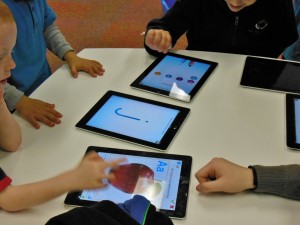In any debate about the best way to educate children, there will always be people strongly advocating the need to have access to the latest technology. However, at a time when budgets are being slashed, is investment in technology the best way to spend money?
Computer suites and interactive whiteboards
In terms of technology, most schools are already unidentifiable from those a couple of decades ago. While once upon a time a school was lucky if it had a single computer for its pupils, now every school has computer suites. Meanwhile people in their 20s will easily remember the use of chalk and blackboards, but today learning is aided by interactive whiteboards and multimedia.

Easy access to computers and interactive whiteboards are now considered essential for any school – the debate has moved on to whether pupils can benefit from tablets such as iPads. Some experts are even suggesting that an iPad per pupil could be the next great educational leap and will one day seem as common-sense to people as the evolution from slate boards and chalk to paper and pen. The question is should that leap be taken today?
A bookless classroom?
One of the benefits of iPads is that they can greatly cut down the amount of paper in a classroom. Instead of having a classroom stocked with textbooks for a dozen different subjects, they can be stored as eBooks on the tablets. There are many benefits to such a setup: it frees up space in the classroom, it saves time since books don’t need to be handed out and collected in, and it prevents books from being lost or damaged. Since textbooks can be very expensive, having them all stored as eBooks may actually save money in this area, as they won’t need to be replaced.
Can the cost be justified?
Of course, cost is one of the biggest boundaries to the ‘one tablet per pupil’ idea. For some, particularly those in the state sector, there is no argument – investing in this technology right now is simply unaffordable. For others, often private schools, this technology presents an unmissable opportunity for a richer learning experience. Textbooks on iPads are becoming more and more interactive – they can provide opportunities to test pupils on their knowledge, and provide videos or sound clips to demonstrate information that sometimes the written word is unable to. Custom-built educational apps could be the difference between students understanding a tough concept and being left completely in the dark. Seen as a long term investment, shouldn’t we give pupils the best chance to succeed starting today?
The cost of protecting your investment
Any school that does choose to provide iPads for its pupils, whether on a per pupil basis or for sharing, needs to have proper security equipment in place to protect its investment. Relying on the school secretary or IT administrator to oversee another responsibility is a likely recipe for disaster. A fully automated system, such as iPad lockers, is ideal for schools that want complete control over who can access their iPads. It can restrict access to certain times, comes with inbuilt charging facilities and has a variety of entry systems (biometric, smartcard and keypad). Unique RFID tagging and custom-built software ensures that staff or pupils are held accountable for what they use. Of course, this is another added expense that may be difficult to justify if on the other hand you have to cut subsidies for school trips, but there’s no point investing in iPads only to have them stolen because of lax security.
An on-going debate
Many people will think that even questioning the idea of introducing large numbers of iPads to the classroom is foolish during what is being characterised as a time of austerity. Others, however, will argue that this is inevitably where education is headed, and that investing in education is the best way to ensure a prosperous economy in the long-term. One thing is almost sure however: the future of the classroom will undoubtedly look very different.
Image of children learning with iPads by mikecogh